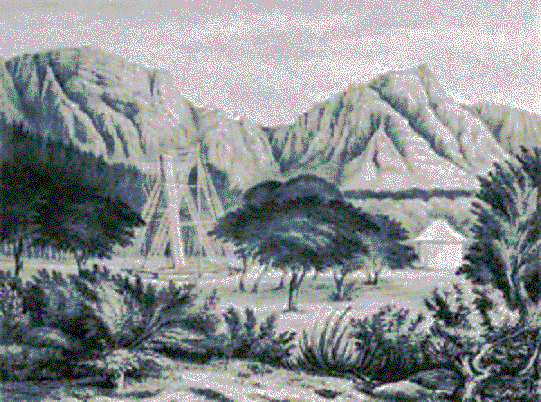Eta Car became famous 150 years ago, when underwent a giant outburst. It reached magnitude -1, the brightest star in whole the sky, after Sirius. In 30 years, it released as much energy as a supernova -about 10exp(49.5) ergs. A dusty envelope made the apparent brightness of the star to fade below the naked eye visibility. The optical/violet light screened by dust, reappeared in the infrared, making Eta Car the brightest object in the sky, outside the Solar System. Actually, the total luminous power, decreased only slightly after the giant burst, remaining very high until now. This indicates that the star survived the event. The source of energy is not related to the nuclear burning core, and it's nature is unknown. This is very intriguing, taking into account that it happened other times in the past centuries, as seen by the expanding ejecta outside te Homunculus. Eta Car is an exciting object by many other reasons:
a) it is one of the most luminous and massive star known;
b) the Homunculus, formed in the great burst of 1840 displays a beatiful bipolar flow;
c) several "rays" or "jets", form a very flat structure exactely in the Homunculus' equator;
d) some "jets" are headed by misterious "blobs", near the central star, that shoud have required a huge amount of energy on a very short time scale to be formed;
e) a large amount of dust was formed in an ambient deficient in Carbon;
f) the size of dust grains around Eta Car is 10 times larger than that normally found in other stars or in the interestelar clouds.
Eta Car is more than a star: is a laboratory in the space, ideal to test theories of massive stars' origin and evolution, gas dynamics, formation of solid particles and energy emission processes in astrophysical plasmas.
NOTE: in the ancient texts, Eta Carinae was designated by Eta Argus, Eta Navis or Eta Roburis.
Theories about eta Carinae
| slow supernova (Thackeray 1956, Zwicky 1965, Rodgers & Searle 1967) |
| pulsar embedded in a supernova remnant (Ostriker & Gunn 1971, Borgwald & Friendlander 1993) |
| compact object accreting mass from a companion (Bath 1979, Warren-Smith et al. 1979, Tutukov & Yungel'son 1980; Viotti et al. 1989, Gallagher 1989, van Genderen, de Groot & The' 1994) |
| massive pre-main sequence star (Gratton 1963) |
| massive main sequence star (Burbidge 1962, Tamman & Sandage 1968, Burbidge & Stein 1970, Talbot 1971, Davidson 1971, Hoyle, Solomon & Woolf 1973, Humphreys & Davidson 1979, Davidson, Walborn & Gull 1982, Doom, De Grev & Loore 1986) |
| atmospheric instability in massive post-main sequence star (Andriesse, Packet & de Loore 1981) |
| dynamical instability in a stended atmosphere (Stothers & Chin 1983, 1993, Maeder 1983, 1989, 1992) |
| long period binary with wind-wind collision (Damineli, Conti & Lopes 1997 ). If confirmed, the recent discovery of binarity, leads to the most massive system known and an extreme case of wind-wind collision. |
Historical
facts


São Paulo 1827 -John Burchell alert John Herschell
in Cape of Good Hope about eta Argus variations
| Year | Observational fact |
| 0-1600 | Eta Car were fainter than 4m, as it doesn't appear in Ptolomy's and other ancient catalogues. |
| 1400 | Ejection of clouds presently seen ouside the Homunculus |
| 1600-1822 | 4m in 1603 and 1677, 2m to 4m in 1685-89, 2m in 1752, 4m in 1800, 6m to 2m in 1822 |
| 1827 | John Burchell visiting São Paulo (Brazil) in 1825-28 send an alert to John Herschell in South Africa that eta Argus is varying from mag 4th to 2nd. |
| 1838.0 | New light peak to 0.2m and fading to ~1.5m |
| 1843.2 | -1m, fading to 1.8m and jumping again to -0.2m in 1850. The giant eruption ends |
| 1870 | Steady brightness decline, reaching 8m in 1870. First spectrum: emission lines (H, HeI and FeII) |
| 1890 | Bursts in 1887, peaking 6.5m in 1895, returning to 8m in 1890. F supergiant spectrum in 1895. |
| 1935 | The apparent bightness began to rise at a rate of ~2.5m/century |
| 1948-98 | 1948: first "spectroscopic event". Similar events in 1965, 1981, 1987, 1982 and 1998 |
| 1998.0 | First spectroscopic event recovered after a prediction, based on the 5.52 year cycle. |
| 2003.5 | Prediction for a new event on June 25th |